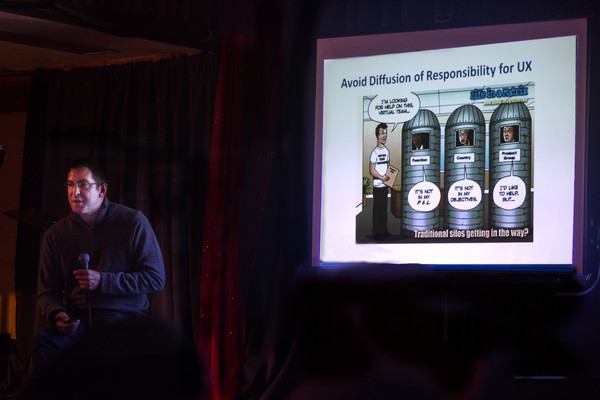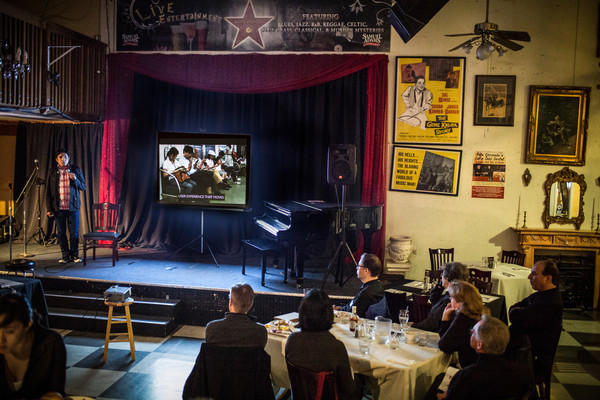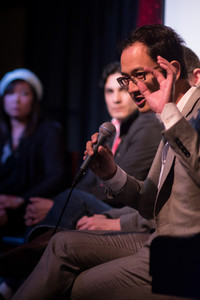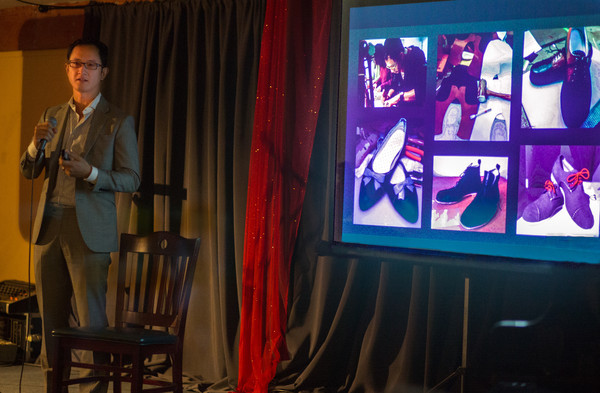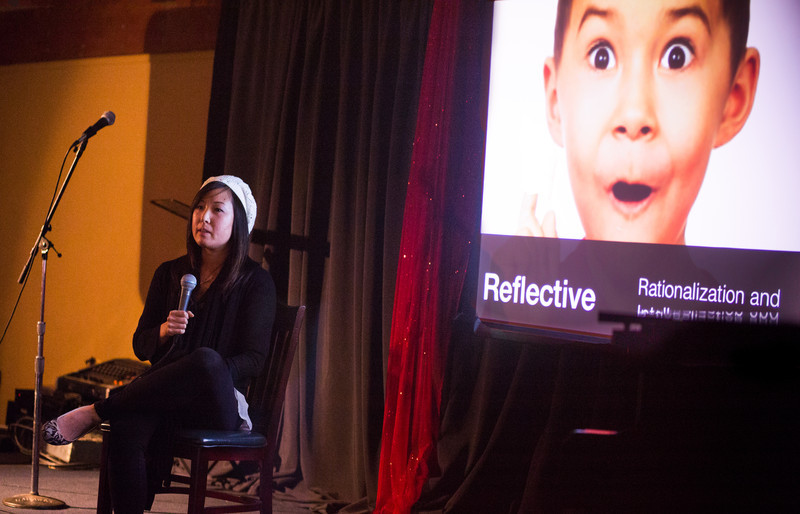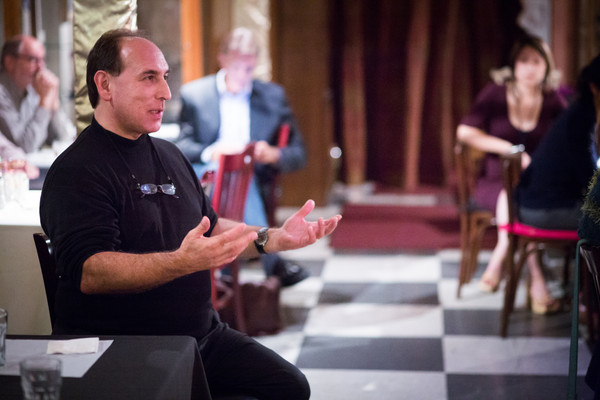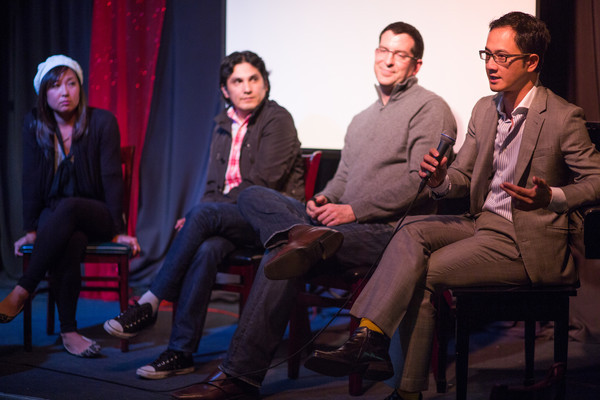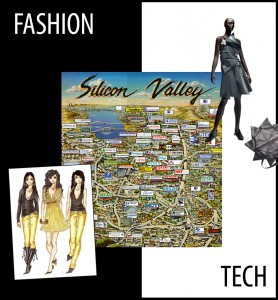UX
NOV 7th 2012 (Recap): Design for Experience
In a recent event, the merits of designers being actively involved in all stages of the invention process was discussed. Topics such as the strain between designers and builders, the requirements for designing smartphones and tablets, and advice for designers of all spades was spoken on then discussed.
Silicon Valley has long been known as the crème de la crème of “making things” for as long as most of its residents can remember. The motivations range from solving one’s frustrations and impressing one’s friends to making something cool to making a bunch of cash… Nonetheless- whatever the motivation- you can’t get very far without running into an enormous need for design; Hence, the role of the designer has become a critical landmark in the Silicon Valley landscape.
For this reason, the Silicon Valley Innovation Institute gathered an experienced group of designers, each with a different area of focus, to tackle the challenge of designing for superlative user experience.
The night started off on a sound note by Jon Innes, an experienced design consultant (UX Innovation), who focused on the innate tension between designers and builders, leading to the different ways companies approach the development process:
From the specific and pre-planned waterfall method to the rapid iterations of the lean startup, Jon believes that the key is to involve designers at every stage, and to integrate the technology, the feasibility, as well as the design into the creation process.
Then the torch was passed on to Rodrigo Lopez, a Peruvian-born entrepreneur (Aardvark), who gave a good overview of the unique needs behind designing for mobile phones and tablets:
An essential factor in this realm, he says, is to move fast: “Your product must move as fast as the ecosystem.” In the mobile ecosystem, the designers are designing for phones and tablets that change once or twice a year (Apple) or have a plethora of variations (Android). Plus, the competition on mobile devices rapidly changes and updates, so unless you change quickly enough to stay attractive, you will be forgotten like a week-old text message. Another important dynamic of mobile design is that, if you want your users to use a feature, it has to be easy to find and easy to use. Otherwise, it might as well not exist, because it won’t be utilized by impatient on-the-go users. In fact, it would probably be better if it didn’t exist at all, because then it wouldn’t get in the way or confuse anybody.
Next in line was Paolo Malabuyo, the director of product at Zinga, who introduced himself by saying, “Please notice that I am wearing a suit.”
This was a good move for a few reasons. First, it got the people to applaud. Second, it made the point that design is about all of life, not just products. Paolo has a wide reservoir of design experiences from which he shared some unique insights.
“Bask in your ignorance,” he said. If you are designing in order to make an experience good, it’s important to go through that experience yourself. We must also remember that there is only one first time for everything, so taking notes when you are going through a first experience can truly double your knowledge (not only have you learned the thing itself, but also what it’s like to learn it for the first time). Paolo also brought up the idea of a Maslow’s pyramid of design, which is a re-imagining of the Maslow’s Hierarchy of Needs with the needs of a product. From the bottom level up is functionality, reliability, usability, then beauty. In other words, if a product isn’t functional, then nobody cares if it’s usable, and whether it’s beautiful is irrelevant; Each level is a pre-requisite for the enjoyment and adoption of the next level. Another point made by Paolo is that you can help your design sense by stayingg connected with the traditional modes of creation. He himself made some custom shoes because he likes to perform a craft and do something with his hands. This kind of thing helps the inner design brain become more experienced and refined.
Our next excellent speaker was Debbie Kawamoto, lead product designer at Yammer, a social network for internal company networks:
Kawamoto worked as an art director in advertising for Nissan, which gave her a unique perspective on the design process. She learned that the experience of buying something, especially something expensive, has to be more like a relationship and less like a transaction. A customer is less likely to step out of a good relationship at any stage and head in another direction (not consider buying, not buy, not recommend, or not rebuy). It’s important for a product and company to connect on different emotional level with their users. On the visceral level, it’s important for a product to be immediately appealing, on a behavioral level, it must provoke action, and on a logical level, it is still important for a product to be appealing to the mind (be a logical buy). These are all things to remember for the designer.
Finally, Jonathan Hirshon brought the lessons home. An experienced PR consultant, Hirshon focused on how the image of a company is designed. Touching on examples ranging from Microsoft Windows packaging to Apple’s choice to release Siri, and speculations on the Apple TV, Jonathan took us on a humorous journey examining the impacts of design on brand.
The evening concluded with a lively discussion with the illustrious panel of speakers, led by SVII founder Howard Lieberman:
All in all, everyone left thinking more about the design conundrums of life and more fully equipped to address and overcome them.
For your next SVII adventure, join us this coming Wednesday as we explore the glamorous and surprising world of Silicon Valley Tech x Fashion!
Pre-registration Tickets ($20) – On SALE NOW!
NOV 7th 2012: Design for Experience (Innovations in User Experience & Product Design)
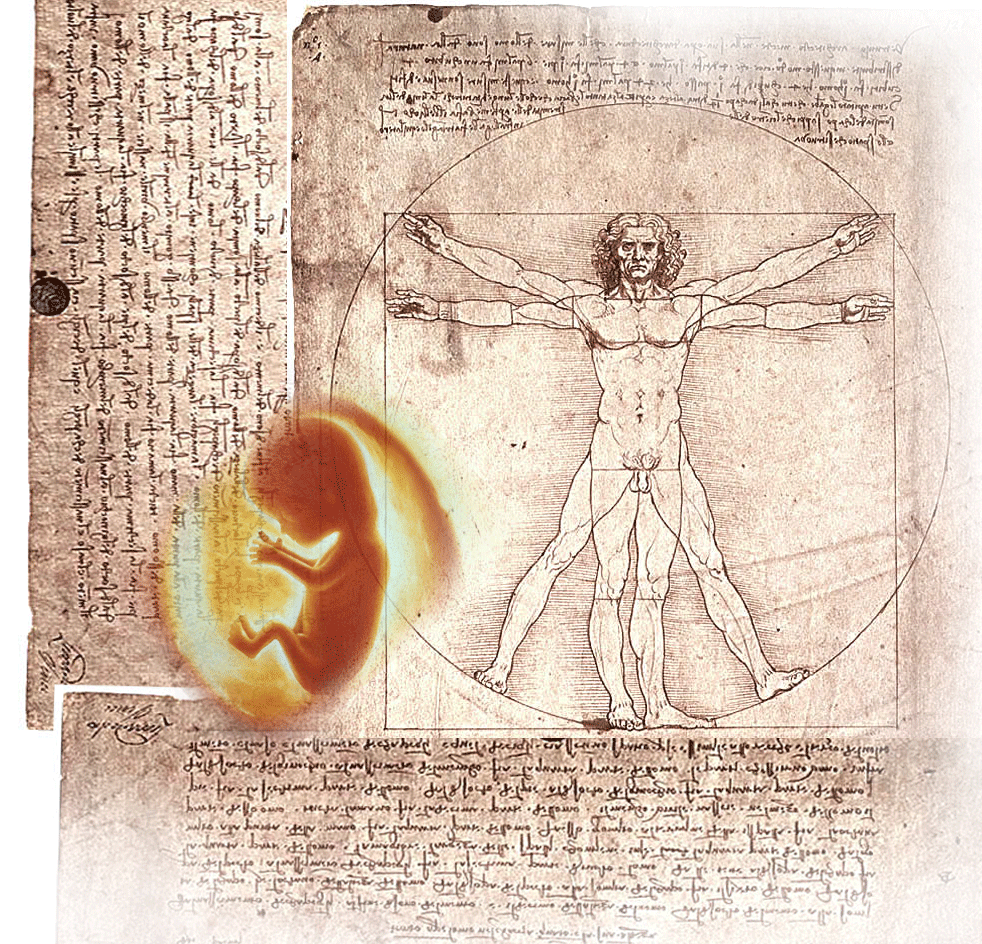
“A mind that is stretched by a new experience can never go back to its old dimensions.” – Oliver Wendell Holmes, Jr.
Humans are designed for experience. Underneath the form, function, and technological advancements that surge the heights of new products and services everyday, the experience each design enables and creates is inevitably what girds a product’s success, makes or breaks market receptivity, and distinguishes the best apart from the the pack.
Because your users are people, experience matters.
Join us this Nov 7th to explore the magic behind making experience an MVP in your product’s design, implementation, and deployment.

Jonathan Hirshon
Principal, Horizon Communications
Called ‘The Guru of Silicon Valley’ by BusinessWeek, Jonathan has exclusively focused on high-tech PR over the last 24 years, with extensive corporate and agency PR experience. The company’s main website is at http://www.horizonpr.com. Jonathan was the PR manager for Sony Corporation in its heyday, representing the company’s far-flung ‘non-consumer’ business units – at the age of 25, he was acclaimed as one of the youngest managers in Sony corporate history. Sony products in the non-consumer area include professional audio/video equipment, computers, peripherals and semiconductors. As a key member of the headquarters corporate communications staff, his role included counseling top management, day-to-day product PR responsibility and control of a million dollar+ budget, all within a few years of graduating college. Jonathan has gained the respect of leading media, analysts and peers for his in-depth technical knowledge as well as his marketing ability and industry contacts. Through his expertise, Horizon was awarded Agency of Record status at Apple, SGI and other Fortune 500 companies, as well as a host of startups. He has arranged Business Week and Forbes cover stories, as well as articles in leading business, consumer and high-tech venues. He has been personally profiled in BusinessWeek (twice), The New York Times, RJ Magazine, and the San Jose Mercury News. Jonathan currently contributes to gigaom.com. Jonathan has also been invited to speak at several prestigious venues, most recently to address the Reuters Foundation’s Digital Vision Program at Stanford University. He is a past member of SMPTE (the Society of Motion Picture and Television Engineers) and a current member of IEEE (the Institute of Electrical and Electronics Engineers).
